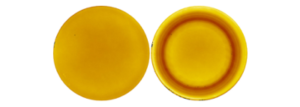 Hossein Shahinian, Harish Cherukuri, and Brigid Mullany recently published “Evaluation of fiber-based tools for glass polishing using experimental and computational approaches” in Applied Optics, 55(16), 4307-4316 (2016).
Hossein Shahinian, Harish Cherukuri, and Brigid Mullany recently published “Evaluation of fiber-based tools for glass polishing using experimental and computational approaches” in Applied Optics, 55(16), 4307-4316 (2016).
Abstract:
Polymeric pad or pitch-based tools combined with loose abrasive slurries are typically used in the polishing of optical materials. In this paper, the potential of fiber-based tools to both remove material and provide high quality surface finishes on BK7 glass is explored. The potential advantage of fiber-based tools over traditional tools is their inherent compliance, which could accommodate varying workpiece surface curvatures as found in aspheres and freeforms. To evaluate the new tools, both experimental and finite element (FE) modeling approaches were taken. A FE model consisting of a single fiber engaged with the workpiece surface was used to estimate the shape and magnitude of the pressure distribution exerted by the fiber on the workpiece surface. Two different tool configurations, yielding two different Fes, predicted pressure distributions, were used to polish BK7 samples, and the material removal profiles were interferometrically measured. The resulting profiles and the predicted pressure distributions share the same v-shape. While differences in scale exist between the experimental and FE-predicted profiles, the tool generating higher material removal had the greater predicted pressure distribution, thus demonstrating the ability of the FE model to provide insights into tool design. Additional testing was conducted to determine if the tool’s removal rate can be predicted by Preston’s equation. Initial results indicate the equation is valid within the range of parameters tested. The surface roughness of BK7 samples processed by this tool was measured and some deterioration on the Sq value was noted; the surface roughness increased from 1.89 to 3.66 nm Sq. Over several hours of continuous use, the load applied by the fibers decays in a repeatable manner, and little wear was observed on the fibers after 5.33 h of polishing.


